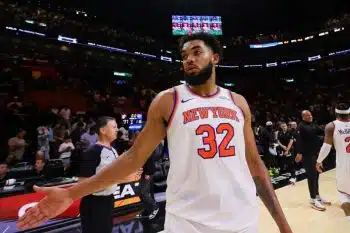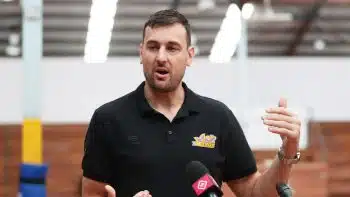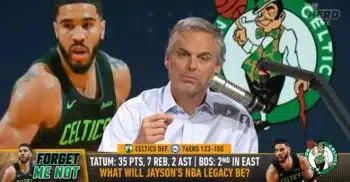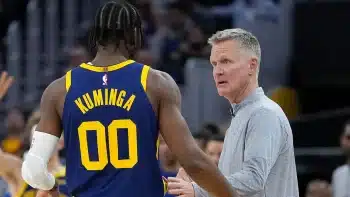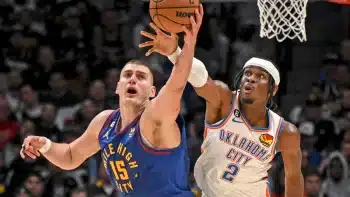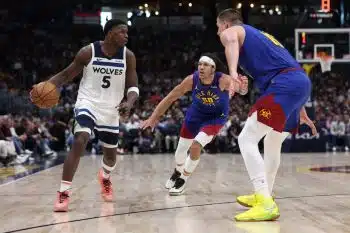In Case You Missed It
NBA Sunday: Revisiting the 2014 Draft Class
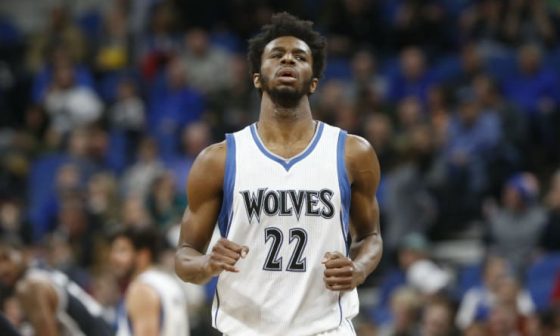
Generally speaking, there are three paths that lead to contention in the National Basketball Association: free agency signings, acquisitions by trade and, of course, drafting talent.
For evidence of time waiting for no man, just consider: it’s been eight years since the 2009 NBA Draft. The class was regarded as being one of the weaker in recent memory—a declaration that, in hindsight, was laughable.
The 2009 draft brought the likes of Stephen Curry, James Harden, Blake Griffin, DeMar DeRozan, Jrue Holiday and Jeff Teague into the league. The draft also featured scores of other talented contributors, including Tyreke Evans, Ricky Rubio, Taj Gibson, Jodie Meeks and Danny Green.
The class underscores the fact that it’s impossible to know which players will be great, which players will become champions and which players will ultimately become transcendent.
One thing that has remained fairly consistent throughout the course of time, however, has been that the third time, or season, in the charm.
That’s what makes the 2014 NBA Draft class interesting—the third-year rise hasn’t necessarily held true for the cream of the class.
It’s quite unique.
* * * * * *
The pride of Ontario marched across the stage as the Cleveland Cavaliers made the wise choice. Andrew Wiggins was selected first overall to the Cavs before being traded to the T-Wolves, but, to this point, simply hasn’t helped the the T-Wolves change its fortunes. Obviously, Wiggins hasn’t exactly been given a fair shake. He’s been saddled with bad coaches, bad teammates and a poorly run organization for a majority of his time in Minneapolis, though his fortunes seem to have changed fairly dramatically over the past two summers.
Still, it’s curious that owner Glen Taylor found it necessary to publicly criticize and challenge Wiggins when he strangely went on the record to discuss the things that Wiggins apparently needs to do to “earn” the maximum extension that was tendered.
That Wiggins has severed ties with Bill Duffy—the agent who represented him during negotiations and has not yet signed the extension—those are noteworthy events.
Meanwhile, in Philadelphia, fans of the Sixers have reason to be excited. Aside from some wise and timely free agent acquisitions, the Sixers have a nucleus of young players that appear capable of making a difference for the franchise. Front and center, of course, is Joel Embiid.
To this point, Embiid has shown flashes of every bit of potential that helped him become the third overall pick in the 2014 draft. Still, through three years, he has managed to play a total of just 31 games. To call that disconcerting would be an understatement.
As Embiid was tabbed as being the next Hakeem Olajuwon, Jabari Parker was anointed the next Grant Hill. Jason Kidd, Parker’s head coach in Milwaukee, was Hill’s draft mate and shared the 1994 Rookie of the Year trophy with Hill. He would probably be a good judge of the fact. Yet, somewhat similarly to Embiid, after three years, Parker has suffered season-ending injuries twice.
What’s even worse? Those two season-ending injuries were each the result of a torn ACL, each occurring in his left knee. It’s difficult to imagine Parker fulfilling the potential that many saw if his body can’t hold up to the rigors of an NBA season.
Wiggins, Embiid and Parker were selected with the first three picks in 2014, but many of the other noteworthy picks in the draft simply haven’t panned out. From Aaron Gordon to Dante Exum to Julius Randle and Elfrid Payton, to this point, the third season has failed to be the charm.
It’s amazing to consider, at this point, that the argument could be made that Nikola Jokic of the Denver Nuggets could ultimately go down as being one of the standout players. Aside from Wiggins and Embiid, Jokic, the 41st overall pick in the draft, is the player who seems to have inspired the most confidence from his fan base. Most notable about Jokic, however, is the fact that he only recently had the way cleared for him to become the featured player in the Nuggets front court.
One could only imagine how the class will be looked upon in three more years. The early returns have been interesting, to say the least.
* * * * * *
While Parker was considered the heir apparent to the Bucks franchise, Giannis Antetokounmpo has emerged as a legitimate star in the league. Around him, in Milwaukee, the team has built a young core consisting of players busting with potential, perhaps none more notably than Malcolm Brogdon.
This past season, Brogdon became the first player in the modern draft era to win the NBA Rookie of the Year Award after being drafted in the second round. The 24-year-old point guard was selected with the 36th overall pick in the 2016 draft.
That Brogdon managed to win the award had just as much to do with his inspired play and effort as it did with the fact that the 2016 class put forth some incredibly weak individual performances. Obviously, it’s a bit early to declare the 2016 draft as being as weak as the 2000 draft, but it’s probably fair to ponder.
What’s also probably fair, however, is to declare that the 2014 class has been surpassed by the 2015 class in terms of the impact that the headline players have had on the league, and that’s saying something considering the 2014 class has had one additional season in which to make their marks.
Led by Karl-Anthony Towns, the 2015 class also features the likes of Kristaps Porzingis. The two have each already emerged as stars whose light, at least currently, shines just as brightly as those cast by Wiggins and the oft-injured Embiid. Aside from Towns and Porzingis, though, Devin Booker is one of the most gifted 20-year-old players this league has seen in quite some time. Though far from a complete player, Booker’s scoring instincts and ability are well-seasoned; often, 10-year pros don’t have the poise or polish he possesses.
Meanwhile—especially in the watered-down Eastern Conference that saw All-Stars Paul George, Jimmy Butler and Paul Millsap take their talents West—D’Angelo Russell and Myles Turner will each eventually find themselves taking part in the mid-February classic.
Other contributors from the class, Justise Winslow, Willy Hernangomez and Norman Powell, have each shown flashes. Each of the three could emerge as impactful players for the Miami HEAT, New York Knicks and Toronto Raptors, respectively.
When it’s all said and done, the 2015 draft class will certainly feature three future perennial All-NBA performers, perhaps five or six All-Stars and eight starting-caliber plus-contributors at the NBA level.
That’s almost as deep as the 2009 draft class, and, sadly, to this point, much more than we can say for 2014.
* * * * * *
As the October deadline approaches for members of the 2014 class to sign rookie extensions, the fact that the first overall pick and Rookie of the Year from the class hasn’t done so is noteworthy—it’s also a microcosm.
The 2018 free agent class is going to feature a great many NBA superstar. Based on how things look at the moment, there may also be quite a few restricted free agents on the market, as well. It would appear that owners are unwilling to commit maximum dollars to young players who simply haven’t shown the consistency and the ability to raise a franchise in three years time.
It’s difficult to blame them.
And it’s difficult to not wonder what we will be saying about the 2014 draft class three more years from now.
